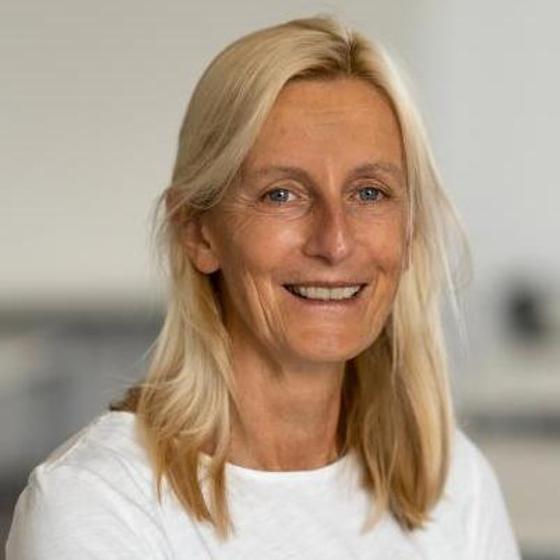Detailed 3D Models of Virus Structures
A new research group is using innovative 3D cryo-electron microscopy to map the surface structures of viruses – and is analysing the spike protein of SARS-CoV-2 as part of a collaborative project.
Since January 2020, Professor Jacomina Krijnse Locker has been head of the Electron Microscopy of Pathogens DRUID research group at the Paul-Ehrlich-Institut. The aim of the LOEWE project DRUID is to find targets for the development of new biomedicines – from the structure of the pathogen through to the infection mechanism in the body. What are the weak points of the virus, bacterium or parasite? Which infection mechanisms could be a target to prevent disease? Prof. Krijnse Locker and her team investigate large DNA viruses as models and use 3D cryo-electron microscopy to visualise virus structures and membrane changes when the virus enters the cell – snapshots of an infection. In 2020, Krinsje-Locker investigated the SARS-CoV-2 RNA virus as a topical issue.
Surface structures of SARS-CoV-2
For SARS-CoV-2, the spike protein is the key to infection. It binds to specific receptors on the cell surface. The spike is the main target for the development of vaccines. As antigens, they induce an immune response that protects people from COVID-19.
Prof. Jacomina Krijnse Locker and Dr Michael Mühlebach, head of the Product Testing of Immunological Medicinal Products for Veterinary Use section and their teams analysed the surface structures of SARS-CoV-2 in collaboration with the European Molecular Biology Laboratory (EMBL), the Max Planck Institute of Biophysics and the Institute of Biophysics at the Goethe University in Frankfurt am Main, using a combination of the latest imaging techniques – cryo-electron tomography, subtomogram averaging and molecular dynamics simulations. The scientists were able to obtain important structural information based on 40,000 spikes.

Like a balloon on a string, the spikes seem to move on the surface of the virus and are thus able to find the receptor for docking with the target cell.
Prof. Jacomina Krijnse Locker , Head of the Electron Microscopy of Pathogens LOEWE Research Group
Under natural conditions, the upper V-shaped part of the spike has a structure that is similar to the recombinant proteins that are being used for vaccine development. The stalk is flexible and can perform bending movements. Analyses also showed that it is modified by a large number of glycan chains. It is likely that these provide the stalk with a shield protecting it from neutralising antibodies.
Funding
State Offensive for the Development of Scientific and Economic Excellence (LOEWE) of the Federal State of Hesse: LOEWE DRUID project (Novel Drug Targets against Poverty-Related and Neglected Tropical Infectious Diseases)
Literature
Turonova B, Sikora M, Schürmann C, Hagen WJH, Welsch S, Blanc FEC, Bülow von S, Gecht M, Bagola K, Hörner C, van Zandbergen G, Mosalaganti S, Schwarz A, Covino R, Mühlebach MD, Hummer G, Krijnse Locker J, Beck M (2020): In situ structural analysis of SARS-CoV-2 spike reveals flexibility mediated by three hinges.
Science 370: 203-208.

